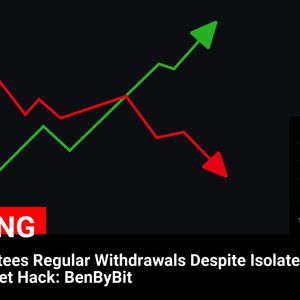Cryptocurrency traders, always vigilant about global economic shifts, are closely monitoring the Forex markets as EUR/USD faces significant headwinds. The tug-of-war between the Euro and the US Dollar intensifies as investors grapple with the potential fallout from former US President Donald Trump’s revived tariff threats against the Eurozone. Will these **Trump tariffs** truly shake the Forex landscape? Let’s dive into the details. EUR/USD Grapples with Resistance Amid Tariff Anxieties The **EUR/USD** pair is currently locked in a fierce battle around the 1.0500 psychological resistance level. This struggle reflects the broader uncertainty surrounding the **US Dollar** and the potential implications of new **Trump tariffs** on European goods, particularly automobiles. Just when the markets seemed to be finding some stability, the specter of trade wars has returned, injecting volatility into the **Forex markets**. On Friday, former President Trump announced plans to impose tariffs on imported cars, with April 2nd earmarked as a possible implementation date. These tariffs, coupled with potential reciprocal measures, have sparked concerns about their impact on major economies, especially those within the **Eurozone**. Impact of Potential Tariffs on the Eurozone Economy Experts predict that Germany, a powerhouse within the **Eurozone**, along with Japan and South Korea, will bear the brunt of these auto levies. Germany’s significant vehicle exports to the US, valued at $24.3 billion in 2023, according to OEC data, highlight the potential economic exposure. However, not all voices are sounding alarm bells. European Central Bank (ECB) policymaker Fabio Panetta, Governor of the Bank of Italy, offered a somewhat tempered perspective. In a recent speech, Panetta suggested that the net inflation impact on the **Eurozone** from these tariffs might be “limited, if not slightly negative.” Panetta’s reasoning hinges on a few key assumptions: Euro Weakness: Tariffs could weaken the Euro against the **US Dollar** due to trade tensions and retaliatory measures. Global Slowdown: A broader global economic slowdown could counteract inflationary pressures. China’s Role: China might redirect goods, previously targeted by US tariffs, into European markets, further dampening inflation. Despite these mitigating factors, Panetta emphasized a dovish stance on monetary policy, highlighting the more significant risk of “inflation falling below the 2% target over the medium term” for the **Eurozone**. Euro Price Performance Today Let’s take a quick snapshot of how the Euro is performing against other major currencies today: USD EUR GBP JPY CAD AUD NZD CHF USD 0.20% -0.04% -0.51% 0.07% -0.23% -0.27% 0.19% EUR -0.20% -0.09% -0.73% -0.03% -0.35% -0.37% 0.09% GBP 0.04% 0.09% -0.55% 0.06% -0.20% -0.28% 0.18% JPY 0.51% 0.73% 0.55% 0.60% 0.33% 0.47% 0.69% CAD -0.07% 0.03% -0.06% -0.60% -0.28% -0.34% 0.12% AUD 0.23% 0.35% 0.20% -0.33% 0.28% -0.02% 0.45% NZD 0.27% 0.37% 0.28% -0.47% 0.34% 0.02% 0.46% CHF -0.19% -0.09% -0.18% -0.69% -0.12% -0.45% -0.46% The table shows the percentage change of Euro (EUR) against listed major currencies today. Euro was the strongest against the Swiss Franc. The heat map shows percentage changes of major currencies against each other. The base currency is picked from the left column, while the quote currency is picked from the top row. For example, if you pick the Euro from the left column and move along the horizontal line to the US Dollar, the percentage change displayed in the box will represent EUR (base)/USD (quote). US Dollar Steadies, Adding Pressure on EUR/USD **EUR/USD** is facing headwinds in extending its recent gains as the **US Dollar** finds its footing. After hitting a two-month low on Friday following disappointing US Retail Sales data, the **US Dollar** Index (DXY) is showing signs of stabilization around 106.80. The January Retail Sales figures revealed a sharper-than-expected contraction of 0.9%, signaling potential weakness in consumer spending. This data initially fueled bearish sentiment around the **US Dollar**. However, the focus has quickly shifted back to the looming **Trump tariffs** and their potential impact on global trade and currency valuations in the **Forex markets**. Earlier in the week, anticipation built around Trump’s hinted “reciprocal tariff plan,” based on his social media post. While investors initially expected immediate details, the lack of concrete announcements has introduced an element of uncertainty, contributing to the current cautious market mood. Looking ahead, speeches from Federal Reserve (Fed) officials this week will be crucial in shaping the monetary policy outlook and influencing the **US Dollar**. Additionally, the preliminary S&P Global Purchasing Managers Index (PMI) data for February, due on Friday, will provide further insights into economic activity. Technical Outlook for EUR/USD: Stuck Below 1.0500 From a technical standpoint, **EUR/USD** is encountering resistance near the 1.0500 level. Despite holding above the 50-day Exponential Moving Average (EMA) around 1.0430, indicating a bullish undertone, breaking through this resistance remains a challenge. The 14-day Relative Strength Index (RSI) is approaching 60.00. Sustained momentum above this level could signal a stronger bullish move. Key technical levels to watch include: Support: February 10 low of 1.0285 Resistance: December 6 high of 1.0630 Understanding the US Dollar: FAQs for Forex Traders For those navigating the complexities of **Forex markets**, understanding the fundamentals of the **US Dollar** is essential. Here are some frequently asked questions: What is the US Dollar? The **US Dollar** (USD) is the official currency of the United States and a dominant global currency. It is the world’s most traded currency, representing over 88% of global foreign exchange turnover. Historically backed by gold, the USD became a fiat currency after the Bretton Woods Agreement in 1971. How do Federal Reserve decisions impact the US Dollar? The Federal Reserve (Fed) and its monetary policy are the primary drivers of **US Dollar** value. The Fed’s dual mandate of price stability and full employment guides its interest rate decisions. Raising interest rates typically strengthens the USD to combat inflation, while lowering rates can weaken it to stimulate economic growth. What are Quantitative Easing (QE) and Quantitative Tightening (QT)? Quantitative Easing (QE): Involves the Fed injecting liquidity into the financial system by purchasing assets, often government bonds. QE generally weakens the **US Dollar**. Quantitative Tightening (QT): The reverse of QE, where the Fed reduces its balance sheet by ceasing asset purchases or allowing bonds to mature without reinvestment. QT typically strengthens the **US Dollar**. Navigating Forex Volatility Amid Trade Tensions The **Forex markets** are currently in a state of watchful waiting. The potential for **Trump tariffs** to reshape global trade dynamics is creating uncertainty and influencing currency valuations, particularly for **EUR/USD**. Traders should remain agile, closely monitor economic data releases, Fed communications, and any further developments regarding trade policy to navigate these turbulent times effectively. To learn more about the latest Forex market trends, explore our articles on key developments shaping US Dollar and interest rates liquidity.



















